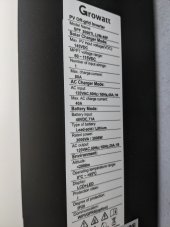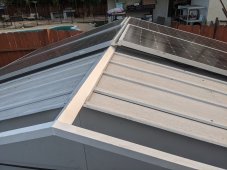cwilken
New Member
- Joined
- May 21, 2021
- Messages
- 73
 My Growatt 3000 has a Max PV input voltage of 145vdc. The MPPT volatage range says 60~120.
My Growatt 3000 has a Max PV input voltage of 145vdc. The MPPT volatage range says 60~120. searching internet i find:
The MPP voltage range denotes the voltage range of an inverter in which the MPP Tracker of an inverter can set the maximum power point in order to operate the PV modules at maximum power. MPP is the abbreviation for Maximum Power Point.
If my input voltage (open circuit) is at close to the max with 142 vdc how does that affect the operation of my MPPT voltage range. What happends if my input is above the 120 specified for MPPT?




